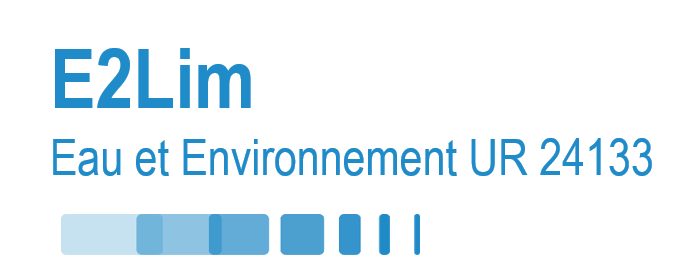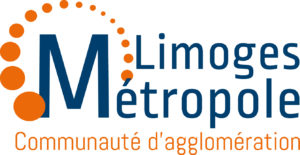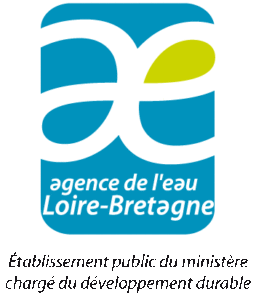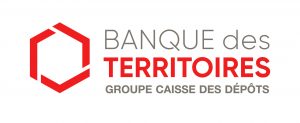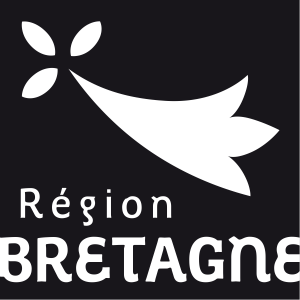Development of passive samplers (PS) for the quantification and speciation of contaminants
Theme team
Permanent staff
Gilles Guibaud – Professor
Rémy Buzier – Associate professor HDR
Robin Guibal – Associate professor
Thibaut Le Guet – Associate professor
Stéphane Simon – Associate professor
Sophie Lissalde – Research engineer
Rachel Martins-de-Barros – Study engineer
Contractual staff
Hassan Ba-Haddou – Post-doc
Mikel Bernabeu de Maria – Post-doc
Juliette Rougerie – Post-doc
PhD students
Lucas Géraud
Noémie Leguédois
Mots clés
Start-Up Ecométrique

Ecométrique is a start-up in the field of environmental metrology applied to water quality, offering innovative tools for measuring micropollutants in water: pesticides, pharmaceutical residues, hormones, metals/metalloids.
You can download the presentation brochure here.
 Three main areas of work guide the work in this theme: (1) developing or improving PEs, (2) evaluating the robustness and contribution of PEs for the quantification or speciation of micropollutants in natural systems or complex matrices, and (3) combining the use of these samplers with high-resolution spectrometry techniques to improve the overall study of environmental contamination.
Three main areas of work guide the work in this theme: (1) developing or improving PEs, (2) evaluating the robustness and contribution of PEs for the quantification or speciation of micropollutants in natural systems or complex matrices, and (3) combining the use of these samplers with high-resolution spectrometry techniques to improve the overall study of environmental contamination.
- Passive samplers currently in use have often remained in their original design and materials. By modifying one or the other, it is possible to make them easier to handle, more robust in aggressive or complex environments, for example by freeing them from certain biases identified since their creation (e.g. surface fouling, limited or reversible binding capacity of certain phases, release of commercial phases generating too much interference during the determination of target compounds).
- These samplers are of real interest because of their integrative aspect, making it possible to follow compounds over time and/or to concentrate them, but also to approach their distribution or speciation in an environment. Although many passive samplers have rapidly become commercial products, feedback from deployments in conditions other than those initially defined raises questions about the validity of the information obtained. It is therefore necessary to clearly define the quantitative information provided by PE.
- The combination of the sampling capacities of PEs, i.e. capturing everything they can fix during the exposure period, with the capacities offered today by high-resolution mass spectrometry (HRMS) analysis technologies opens up new perspectives. Given the multitude of compounds potentially present in an environmental matrix, the exhaustive search for targeted compounds quickly presents technical and financial limits. On the other hand, the interpretation of the signature obtained in HRMS of a sample can directly assess the anthropic pressure that an environment is undergoing and therefore indirectly the risk of quality degradation.
More generally, members of the team participate in the national think tank and two groups of the Norman European network on passive samplers and non-target screening. 
Ongoing projects
The H2020 ITN-EJD M2ex project will test the contribution of passive DGT samplers to the determination of metal/metalloid distribution in different complex matrices (biological reactors, biological sludge, but also soil and sediment). This project, which is currently being launched, will make it possible to implement various approaches, such as the comparison of values obtained by EP with a biological response or with quantities obtained by other chemical methods.
Call for projects, by mutual agreement
Exposure of groundwater resources on basement geology to pollution by regulated micropollutants in water intended for human consumption: phytosanitary products and their metabolites, PFAS, and metallic elements.
Coordinators: Gilles Guibaud, Rachel Martins de Barros, Robin Guibal
The main aim of the project is to provide support, in the form of data and knowledge, for the local debate that has recently been launched on the emerging issue of pesticide pollution of water resources.
1/ To gain a better understanding of the pesticides and metabolites present in the subsurface resource, as the problem is not restricted to the presence of a metabolite, but to the use of pesticides and the transition to food self-sufficiency on polyagricultural livestock farms.
2/ To characterise the trajectory over time of pesticides and metabolites in the resource in order to define the actions required for protection.
3/ In the second part of the CT, check the effectiveness of the actions and adapt them if necessary, in particular actions based on nature (hedges, restoration of wetlands, ….).
4/ In agreement with the CT holders, produce simple information documents based on local data for various non-specialist audiences.
5/ Anticipate regulatory changes and the search for new pesticide molecules or metabolites that have not yet been characterised (e.g. metolachlor-NOA) and propose more effective monitoring tools and methods (passive samplers).
Financial partners :

Call for projects, by mutual agreement
Study of the contamination of the Vienne médiane by organic and mineral micropollutants and the potential transfer of metals/metalloids to biota.
Coordinators: Gilles Guibaud, Sophie Lissalde, Patrice Fondanèche
The objectives of the study are presented under 5 headings:
AXIS 1: What micropollutants are we talking about and what are the levels of contamination [c]?
AXIS 2: Where are they located? What are the potential sources of their presence?
AXIS 3: Are there potential impacts on living plant and animal organisms?
AXIS 4: In addition to the potential presence of micropollutants, what would be the trajectory of plant organisms over a ten-year period of strong climate forcing with an impact on hydrology and IAS?
AXIS 5: What action could be taken?
Financial partners :
AMI Territorial Demonstrator for Agricultural and Food Transitions
Breton Alliance for a Massive Reduction in the Use of Synthetic Plant Protection Products in Agriculture, and an Accelerated Deployment of Agroecology
Coordinators: Sophie Lissalde
ENVEZH is a PIA4 ‘Demonstrators of Agricultural and Food Transitions’ project. It is led by the CNRS and has a total budget of €19m. It is currently in the maturation phase.
Despite the successive implementation of Ecophytos plans in France and the development of organic farming, the rapid and massive reduction in the use of synthetic plant protection products (PPS) by agriculture is still not on track. The aim of the ENVEZH Demonstrator being deployed in Brittany is to make this massive reduction in the use of SPPs by agriculture possible, and also to move towards more agro-ecological agriculture by :
– building on initiatives to reduce the use of PPSs in Brittany by operators in the agro-industrial sector; without setting them in opposition to initiatives led by the public authorities, the aim is to strengthen and scale up these initiatives, which have the advantage of being both agronomically and economically proven;
– encouraging these same private players in agriculture and the industry to innovate even further, in order to accelerate and amplify the reductions already underway in the use of PPS in agriculture, with the support of public and/or private technical and research institutes;
– quantitatively assessing the impact of this acceleration on the main environmental compartments (soil, water, biodiversity), with a focus on water resources.
Financial partners :
